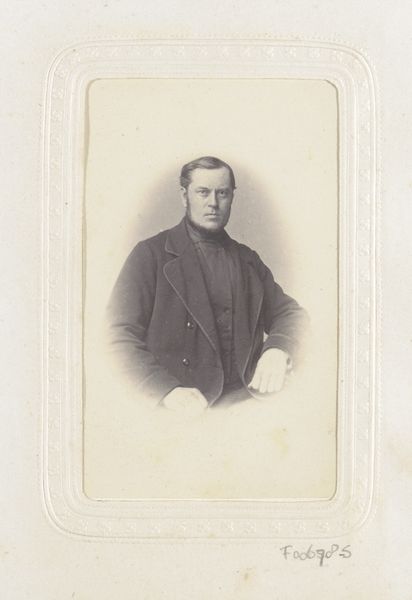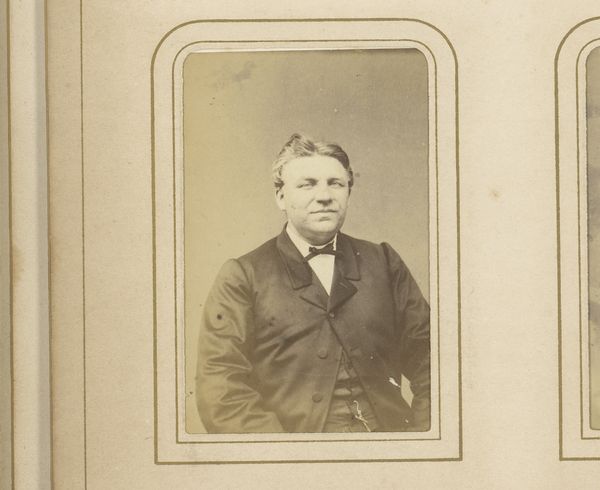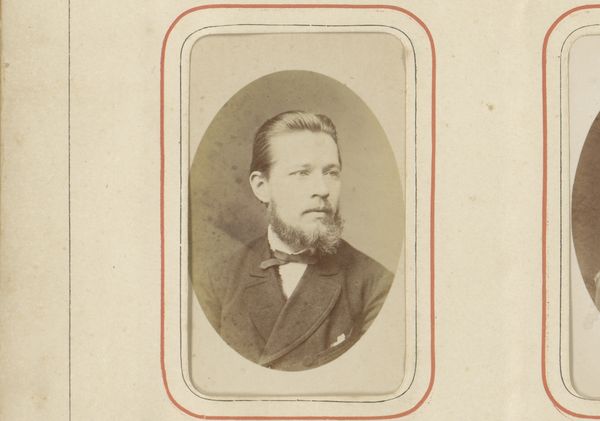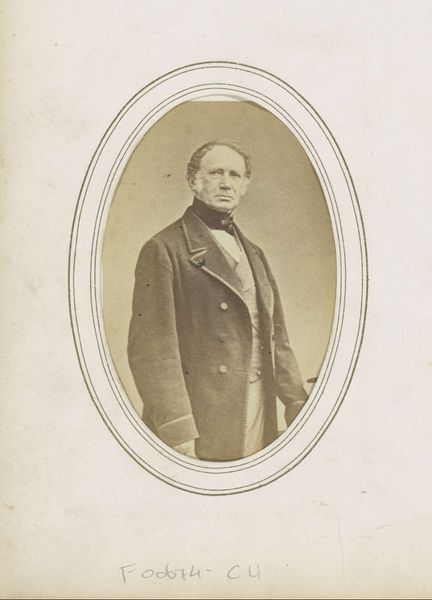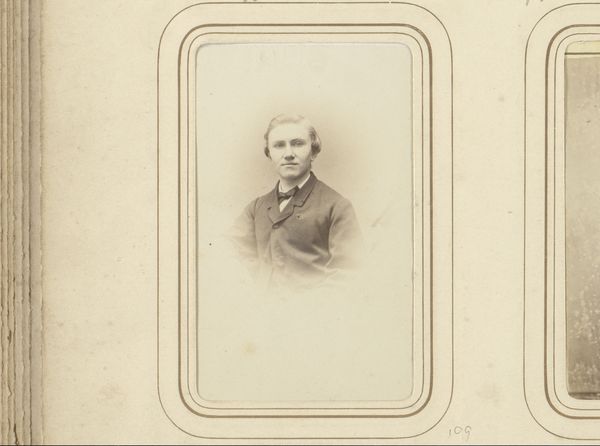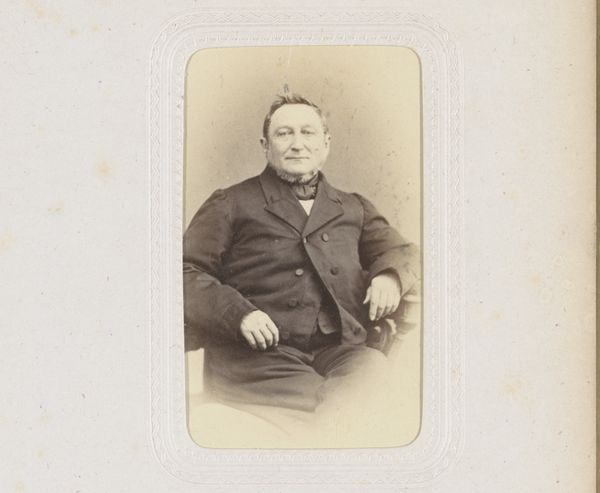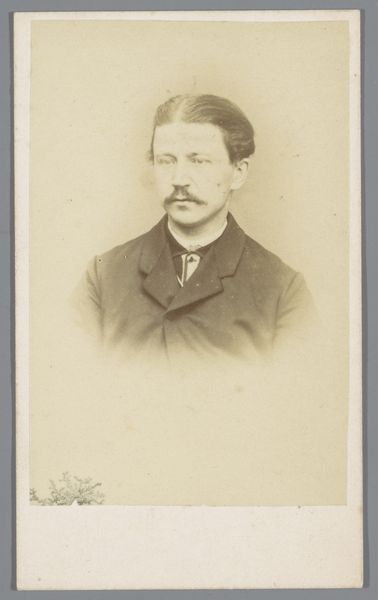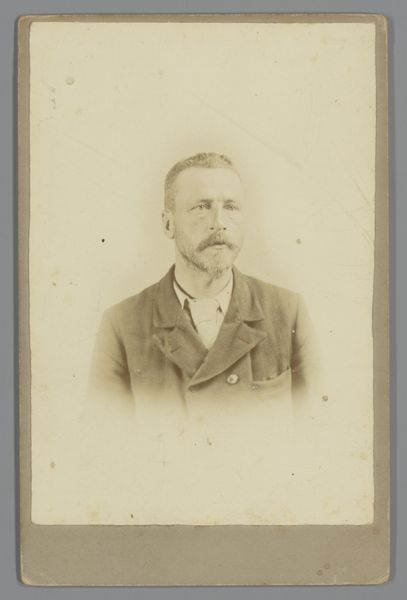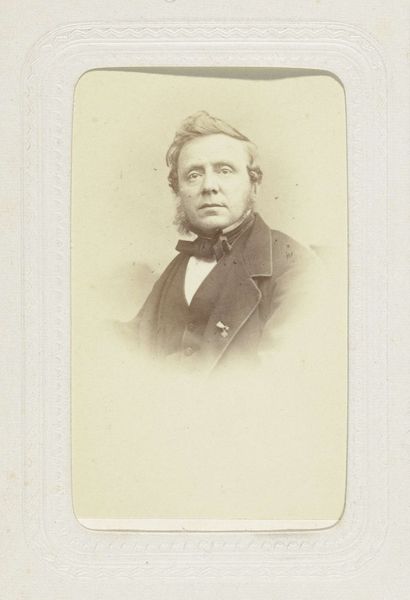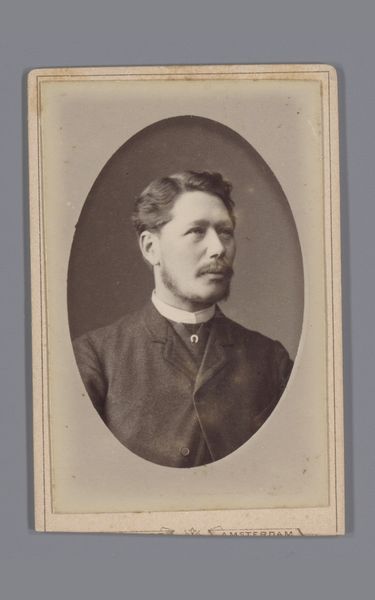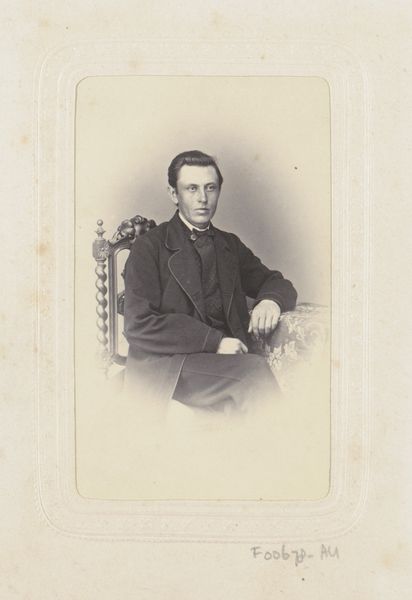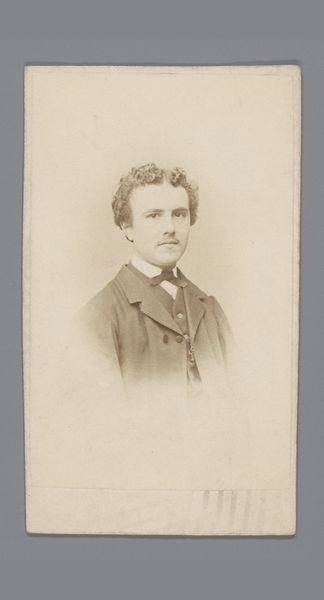
photography, gelatin-silver-print
#
photography
#
gelatin-silver-print
#
realism
Dimensions: height 87 mm, width 53 mm
Copyright: Rijks Museum: Open Domain
Curator: This portrait, simply titled "Portret van een zittende man", dates to somewhere between 1860 and 1880. The medium is a gelatin-silver print. It certainly exudes a kind of solemn gravity. What strikes you immediately? Editor: The sitter's expression certainly lends it that air, doesn't it? But I also see something vulnerable in his eyes. Knowing the rigid social codes of the time, this image feels like it's subtly questioning notions of masculine stoicism. Curator: An interesting read. But let's examine the photograph itself. Observe the careful staging; the sitter positioned to maximize light and shadow on his face, drawing the viewer's eye. This emphasis, it seems to me, privileges objective representation, something the Realist movement highly valued. Editor: I agree on that technical precision. Yet, to view this simply as "objective" feels dismissive. The clothing he wears, the slight imperfection of his glasses—aren’t they signifiers of class, education, perhaps even unspoken political affiliations in a rapidly changing Europe? These photographic portraits provided a relatively accessible way for the rising middle class to claim their space and respectability. Curator: I acknowledge the context, of course, but look how his hands are positioned. Clasped yet relaxed, almost inviting contemplation, don't you think? This compositional choice directs our attention away from overt political statements and towards a more interior psychological reading. It makes us question the depth and identity of this man, inviting a gaze into the subject’s life. Editor: Perhaps. But access was never truly equal, was it? Whose stories were preserved and whose were erased or distorted in those early photographs? This portrait becomes a starting point to reflect on those systemic silences. Curator: That is a very good point. Editor: And that’s something that should always be at the forefront of our appreciation of historical material.
Comments
No comments
Be the first to comment and join the conversation on the ultimate creative platform.
